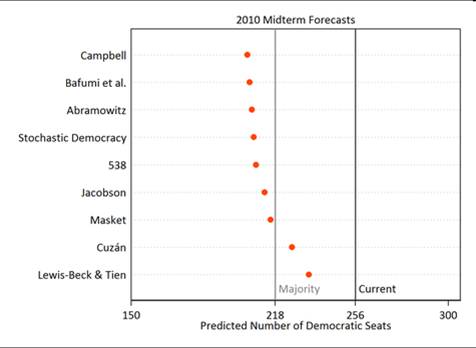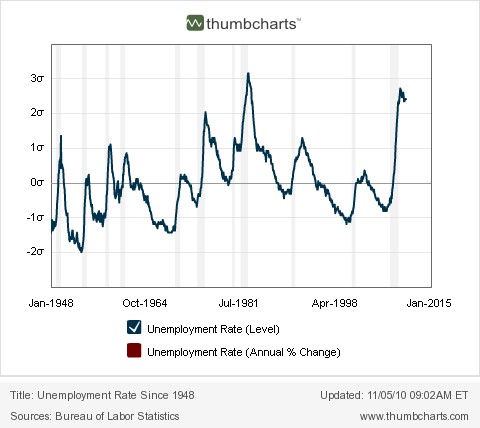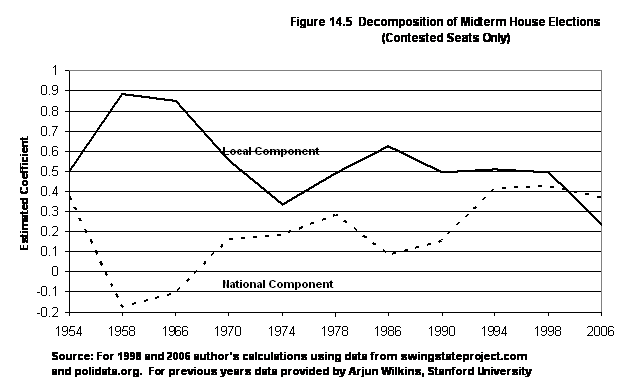Fine. I don’t mind doing this as long as I get some participation! So join in!
I’m pouring the scotch now.
So, I previewed this a bit earlier today. The one point I want to reiterate is that the substance of SOTU speeches varies according to when in the administration’s lifecyle it is given. Since this is an election year, this is less about governing and more about campaigning. So expect a bit more credit-claiming, a bit more laying down of legislative markers, and a bit more effort to spell out the differences between Republicans and Democrats.
A couple of interesting human interest stories as sidebars. Gabby Giffords, of course, is one. The missing Mark Kirk is another. Giffords, by the way, got a huge welcome when she entered the chamber.
One thing to ignore is the incessant chatter from commentators regarding “What the President Must Accomplish Tonight”. He’s actually not going to accomplish much. As I noted earlier, it’s not likely that he’s going to get any positive approval bump from this speech. It won’t help him get legislation through. Think of it really as a very widely-watched campaign address. (He should get an audience of roughly 40-45 million.) Most of the audience will be favorably disposed toward him (they self-select).
And here’s the man of the hour!
There is a real strategy for getting positioned properly to actually greet the President as he enters. Some people are incredibly good at it – they even get autographs.
There’s a nice moment. If that hug with Gabby doesn’t bring a tear to your eye, you are a Borg.
(BTW, what was that all about when Obama told SecDef Panetta that he did a “great job”?) [EDIT: It appears, by light of day, to be a successful rescue mission in Somalia].
Some of the best theater in these speeches is watching the byplay between the VP and the Speaker. Tip O’Neil used to mock George H. W. Bush mercilessly during Reagan’s talk. Reagan would list a legislative request, and O’Neill would whisper “Not going to happen George…”
Didn’t take him long to mention Bin Laden! Good move. The Armed Services are a bipartisan symbol. You can’t go wrong starting with praise for them.
Is it me, or does he seem really energized tonight? Man on a mission. I generally think he doesn’t do passion well – let’s see how it comes off tonight. He’s certainly putting the “ooomph” into it.
Ah, here’s the campaign pitch – fairness. Big theme tonight. Everybody plays by the same set of rules. The reprise of the “we are Americans” made famous in his earlier speech is expected.
Second campaign tactic – remind the audience of how bad things were before he took office. 8 million jobs lost or on the brink. In the last 22 months…… (note there’s a gap there in the chronology, but never mind…..)
This is really a campaign speech, and he gets the partisans on their feat with a pledge to fight obstructionism.
And then lead with a success story – the automakers’ recovery. It’s a good example to use. Note, by the way, where the cities he just cited are located – Ohio! Perhaps the most crucial battleground state. Every word, every example, every nuance of this speech is chosen with an eye for electoral impact.
(What happened to Kerry? Fell off the windsurfer?)
Again, everyone is in favor of keeping jobs here, but one might argue that creating tax incentives in this fashion is in fact unfair. But again, it is good politics. Notice, however, that is in tension with the second part of his speech – he won’t stand by when other nation’s don’t play by the rules. But if you are creating tax incentives to keep companies here, is that a form of protectionism? You tell me.
Another commission? Modeled after Bowles-Simpson?
Here’s the first human interest story. Reagan began this practice of putting a face on a story, if I’m not mistaken, by inviting guests to the gallery and then referencing them. Jackie looks nervous. (I forgot to give the over/under on standing applause lines. Anyone keeping track?)
I hope my students are thinking of me when he talks about teachers working tirelessly, with modest pay. Substitute professors for teachers. We matter!
This is actually a gutsy call on his part, because his push for merit pay (which he didn’t actually call it) is strongly opposed by teachers’ unions. But it plays well with the middle class.
Can he make students stay in school? Isn’t that locally controlled?
(I wish I was sitting behind Al Franken and Bernie Sanders – can you imagine that conversation?)
Another gutsy rhetorical flourish here on immigration – he has not endeared himself to the Latino community with his stepped up enforcement of immigration laws.
(What’s in Joe’s glass? It’s a clear liquid.)
Boehner is mouthing “keystone, keystone”….this call for an all out energy policy to reduce dependence on foreign oil has been voiced by every president since Nixon.
@Chris – You are right. He’s mixing in enough initiatives here – drilling off-shore, energy production, etc. – designed to appeal to independents. Hard to square with keystone however….
What is clean energy, by the way? Is there such an animal?
Geithner seems puzzled by the mortgage program. But then, he always looks quizzical.
Fewer regulations – another shout out to independents. You hit the nail on the head Chris – he’s working really hard here. Wow, he finally gets the Republicans out of their seats!
Ah, finally – he gets to the health mandate, and that brings out the first boos of the night (at least I think they are boos).
How is this playing out there? He seems heavy on rhetoric, heavy on promises, but I’m just not sure he’s going to get much bang for the buck here. Lots of vilifying the usual suspects.
Cordray gets boos too.
Has Boehner reacted to anything tonight?
I was waiting for the Buffett reference. I think tax reform is one area in which the two parties can do business. But not if he stakes out a fixed rate – that’s not how to negotiate.
As I look at the chamber, they all seem resigned that nothing will happen – that almost none of these proposals is going anywhere. The chamber seems lifeless, as if they are going through the applause motions. It’s almost as if Obama has lost them. But then, this speech isn’t directed at them – it’s to the broader audience. I’m getting a sense that members of Congress feel they are being made scapegoats, and they don’t like it – they are set pieces, props, in his opening campaign speech. Not a pleasant position to be in.
So, has this been an effective campaign speech? What do you think?
Looks like he’s going to pivot to foreign policy here. (Don’t forget Syria!) Hillary doesn’t seem confident about Syria.
There’s the olive branch to the Jewish vote. ….
This is heavy – very heavy – on the symbolic language. This is an old-fashioned stump speech. It’s going to play incredibly well with his supporters, it will get yawns from Republicans and I think independents will be skeptical.
Boy, he is hitting every button tonight. Can he wrap himself any tighter in his commander-in-chief mantle? This is great politics. Finishing with Bin Laden – a great touch. Look at Biden – he’s sold.
Now bring it on home….
Great finish – wonderful rhetoric, soaring symbolism, ending on perhaps the high note of his presidency……killing Bin Laden.
Here’s the issue: is there a core to this speech? If I’m a voter, what is the theme here? I wonder if that got lost in the effort to hit so many rhetorical high notes.
I thought Chris touched on a key point – this was targeting that sweet spot: an appeal to the independents, particularly those in key battleground states.He really tried to sprinkle in a mix of initiatives that both emphasized what government can do and what it can’t do. Much of it was designed to show that government can be a partner with business, rather than usurping the private sector. He did this on a variety of issues – education reform, energy exploration and research, reorganization of government, tax reform. These are all, in theory, policies that can appeal to moderates.
He stayed away from some hot button issues – no mention of entitlement reform, for instance. Not a whole lot here on deficit reduction. These are two issues that can’t be resolved before 2012, so there’s really no incentive to address them.
THE REPUBLICAN RESPONSE
Poor Mitch Daniel. He’s been proposed as a potential Republican presidential candidate, with some party establishment members even suggesting he should step in during the current cycle to rescue the party. That’s not going to happen. His appeal, however, comes from his budget expertise and moderate credentials – not his speechifying. It’s always hard to go from the pageantry of a State of the Union speech in Congress to a low-key rebuttal in some lobby area. Bobby Jindal has never recovered from his SOTU response a few years back.
If you listen to Daniels, he has laid out some potential areas of bipartisan agreement, but you have to listen closely. One is clearly tax reform.
Jeff – this is a hundred times better than Jindal. Poor Bobbie looked like he was giving his speech while taking out the trash at his house. It was a disaster. This one is actually pretty good, if you stay awake. He even has a light bulb joke! Plus, I’m guessing it will be short. That was one weakness of Obama’s speech – it was Clintonian in length. That’s been an unfortunate trend in the SOTUs recently.
And he finishes with the old Reagan “City On A Hill” allusion. I thought this was actually a very good speech but delivered in his midwestern understated way. Did he impress any of you as presidential timber? Did he spark a draft Daniels movement?
Summary: Look, these SOTU speeches are always overhyped. They can’t possible live up to the drama imposed on the event by the punditocracy, one reinforced by the pageantry and the continuity of a tradition dating back in some form to the first president. In that sense, they are doomed to disappoint. But if you lower your expectations, and instead view the speech as it really is – a campaign speech that benefits by having a built-in audience, then you can begin to assess it on its merits. On those terms, I thought this was partly effective. I thought Obama’s decision to begin and end with reference to the military mission that culminated in Bin Laden’s death was a brilliant choice – and one that reminds us how much the office changes the man. If you simply read those words, they sounded positively Bush-like – a Mission Accomplished moment where the mission really was accomplished. By wrapping himself in the flag, and in his duties as commander in chief, Obama was able to rise above partisanship – at least in that portion of the speech. I thought that was perhaps the best aspect of his address.
The second element that I thought worked was his willingness to reach out to independents in a number of issue areas – educational reform, government reorganization, offshore drilling and especially tax reform with an eye toward fairness, that many middle-class independents would embrace. As Chris noted, this was both politically strategic, but also laid down some potential points of agreement with Republicans that possibly could serve as legislative starting points in a second term.
The weakness, I thought, is that Obama tried to do too much, and as a result his olive branch to independents was in danger of getting lost in the rhetoric that both demonized Congress and sought to portray himself as somehow above politics. When he launched into strident attacks on the usual bogeymen – oil companies, rich people, Wall St. – he may have appealed to his base, but he also undercut his attempt to reach out to the moderate middle. And the speech was too long – if he cut it in half, it would have been twice as effective.
In the end, I think this speech illustrates the strengths and weaknesses of the Obama presidency. He is able, at times, to capture an audience with some very moving language. But too often he loses his voice in an effort to craft a poll-driven speech that on paper tries to split the difference between competing philosophies, but in practice rings hollow because there’s no underlying theme, or core set of principles that ties everything together. I thought tonight he might hang everything on the issue of fairness, but it didn’t quite cohere. And that is the enduring issue with this guy, I think – what is he about? In the end, this was a speech crafted primarily with an eye toward helping him win reelection. And it reflected the strengths, and the weakness, of that strategic objective. He tried to appeal to both his base and to independents. My guess is that the base will be happier than will the independents – if so, the speech missed the mark, because it is the independents that he must win back if he is to win reelection.
Great participation tonight. I’m glad I caved and decided to live blog the speech – it was much more interesting with everyone else involved.
I’ll be on tomorrow with some follow up comments.
Thanks again to everyone….



